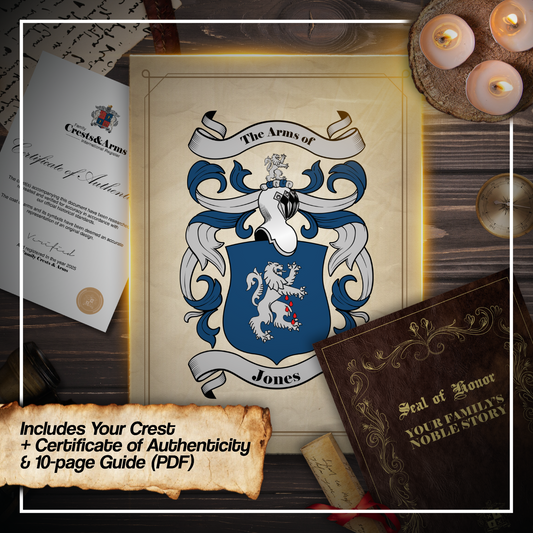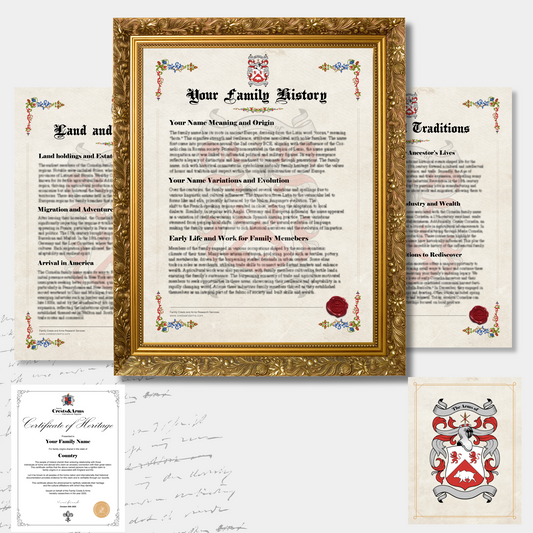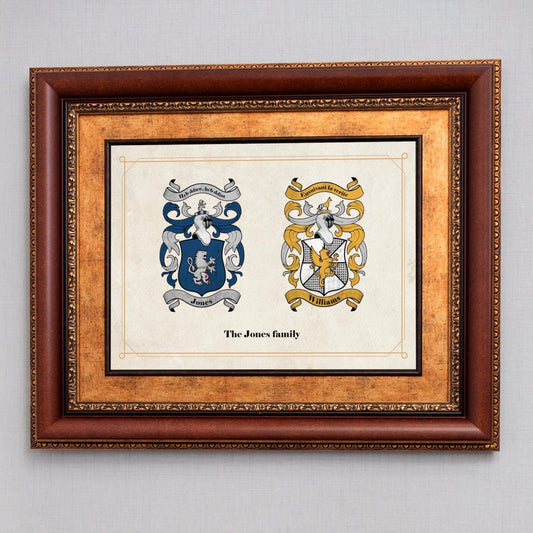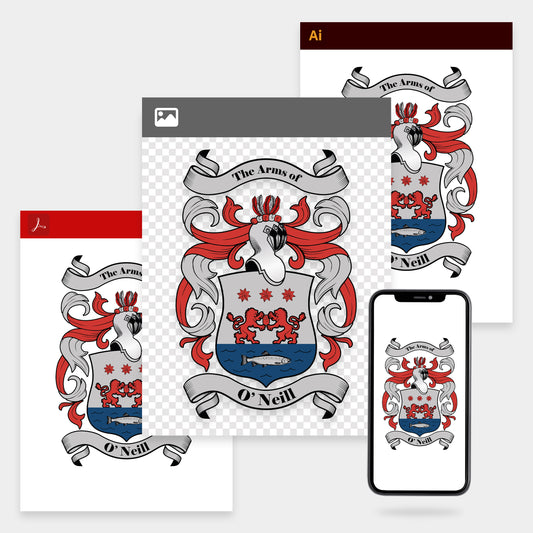French Coat of Arms - History, Meaning and Legacy

When we think of France, a flurry of everyday images may come to mind: the Eiffel Tower, the Louvre, even wonderful foods such as the croissant...
Yet, among these iconic images, the French coat of arms, or "Les Armes de France," holds a unique place. It's a symbol deeply interwoven with the tapestry of French history and cultural identity.
But what's the story behind this emblem? What does each element mean?
The Genesis: Historical Background of the French Coat of Arms
The tale of the French coat of arms is as old as the nation itself, mirroring its societal changes and political shifts.
Tracing its roots back to the High Middle Ages, the genesis of the coat of arms France used is intertwined with the age of heraldry. Knights would display these symbols on their shields and surcoats during tournaments and battles, giving rise to the term "coat of arms."
One of the original coat of arms France sported featured a series of golden fleurs-de-lis, or stylized lilies, against a vibrant azure background. This early emblem was synonymous with French royalty, representing the ruling dynasty's divine right to govern.
Winds of Change: Evolution of the French Coat of Arms
Historical upheaval often leads to a transformation of national symbols, and the French coat of arms is no exception.
The French Revolution in 1789 marked a turning point, as the monarchy and its associated coat of arms were rejected by the public. The revolutionaries sought to replace the emblem of a bygone era with a new coat of arms – a design that encapsulated their radical ideals and vision for a new France.
The current design, adopted by the French Republic post-revolution, is notably simpler but steeped in meaning. The French coat of arms now displays a shield with lictor's fasces flanked by an oak and olive branch, and below it, a ribbon inscribed with the national motto "Liberté, Égalité, Fraternité."
A Language of Symbols: Decoding the French Coat of Arms
Every element on the French coat of arms has been meticulously chosen, each symbol carrying significant weight and purpose.
The Oak and Olive Branch
Accompanying the lictor's fasces are the oak and olive branch, each telling its own tale. The oak branch, sturdy and resilient, symbolizes wisdom and strength. It serves as a nod to the age-old Gallic tradition of revering the oak tree.
The olive branch, in contrast, stands for peace and reconciliation, reminding France and the world of the nation's commitment to maintaining harmony and resolving conflicts through diplomacy.
"Liberté, Égalité, Fraternité"
Emblazoned on the ribbon beneath the shield is the national motto "Liberté, Égalité, Fraternité" (Liberty, Equality, Fraternity). Born out of the tumultuous French Revolution, this motto is a powerful declaration of the nation's core democratic values. It emphasizes the ideals of freedom, equality, and brotherhood, which form the cornerstone of the French Republic.
Contemporary Interpretations and Cultural Significance
In modern times, the French coat of arms remains a potent symbol of national identity, resonating with historical significance and contemporary relevance.
It represents the collective memory of the French nation, bearing witness to its turbulent past and its journey towards establishing a republic.
The coat of arms is more than just a relic of the past; it's a living testament to the enduring French spirit.
Whether on official documents or in popular culture, the French coat of arms plays a vital role in asserting France's identity.
For instance, it appears on passports and national identity cards, reminding citizens of their shared heritage. It also features on official government buildings, asserting the authority of the state and its commitment to upholding its values.
The French Coat of Arms and International Relations
In the sphere of international relations, the coat of arms France uses serves as a potent emblem. For centuries, it has been a central symbol on seals, treaties, and other official diplomatic documents.
It's not merely a decorative element, but a statement of France's sovereignty and the principles it stands for on the global stage.
Moreover, as a symbol of France's rich cultural legacy, the coat of arms has the power to evoke respect and recognition from other nations. Its universal language of symbols can bridge linguistic and cultural barriers, underlining the shared human values of courage, wisdom, and peace.
The Future of the French Coat of Arms
As we look to the future, it's interesting to speculate about the potential evolution of the French coat of arms. Will the coat of arms France cherishes today remain unchanged, or will it continue to evolve, reflecting new societal transformations?
Regardless of how it might change, the enduring symbols of the French coat of arms will continue to be a source of national pride and a beacon of the French ethos.
Whether it's the lion's head symbolizing bravery, the oak and olive branches representing wisdom and longevity, or the national motto asserting the importance of liberty, equality, and fraternity, these symbols are ingrained in the national consciousness.
In conclusion, the French coat of arms is much more than a historical emblem. It's a vibrant narrative of France's past, a powerful symbol of its present, and a promising emblem of its future.
It embodies the essence of the French spirit, standing as a beacon of the nation's rich heritage and its enduring values. From its humble origins in the Middle Ages to its modern iterations, the French coat of arms is indeed a timeless testament to the nation's identity.
Looking for a French family crest? Get your family crest here.
Shop our bestsellers
-
Research + Family Crest Print
Regular price From $33.00 USDRegular priceUnit price per$54.00 USDSale price From $33.00 USD Sale
Sale -
Premium Crest & History Package
Regular price From $199.00 USDRegular priceUnit price per
-
Research + Double Crest
Regular price From $49.00 USDRegular priceUnit price per$54.00 USDSale price From $49.00 USD Sale
Sale -
Digital Crest Files
Regular price $33.00 USDRegular priceUnit price per$49.00 USDSale price $33.00 USD Sale
Sale




